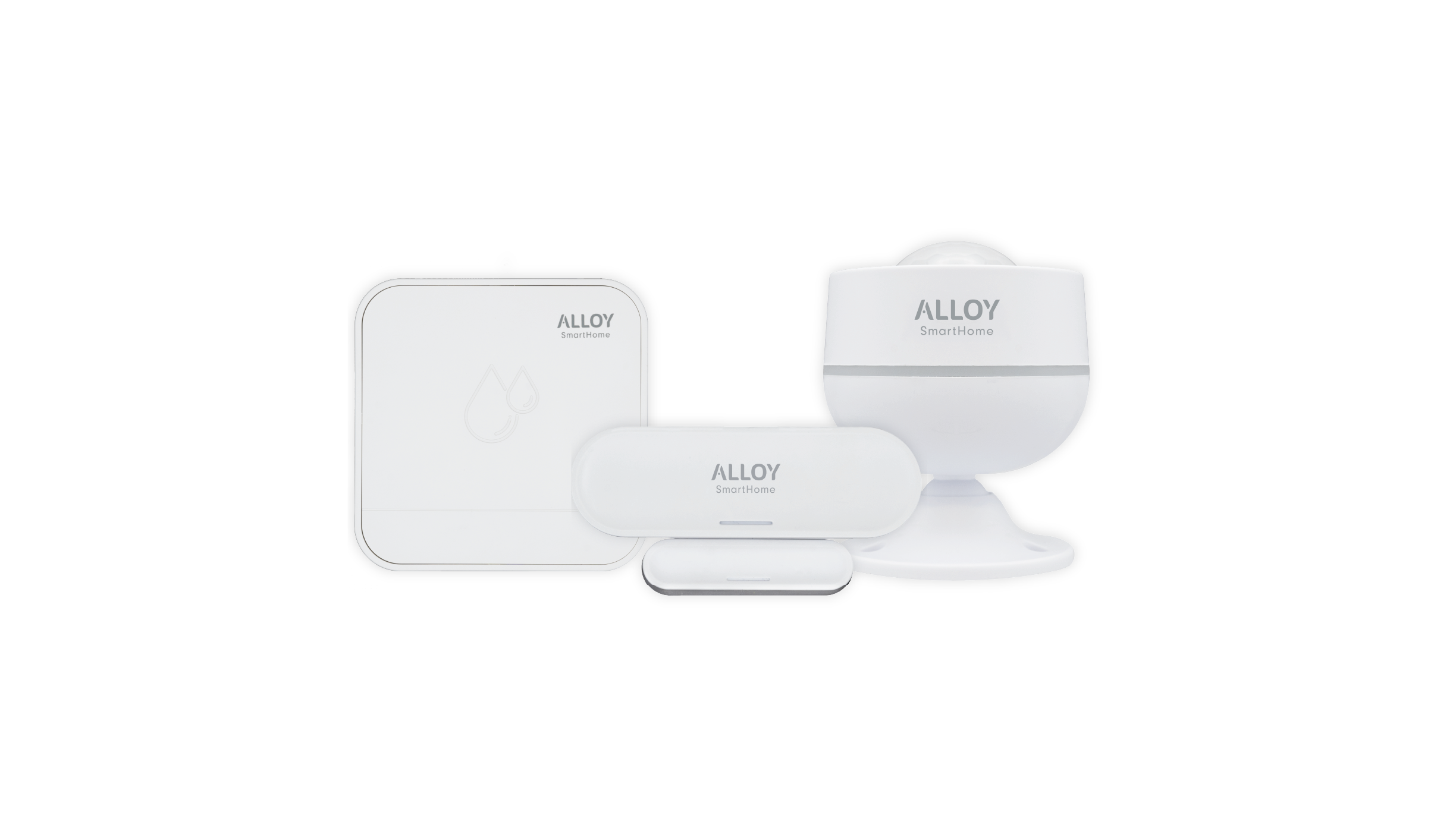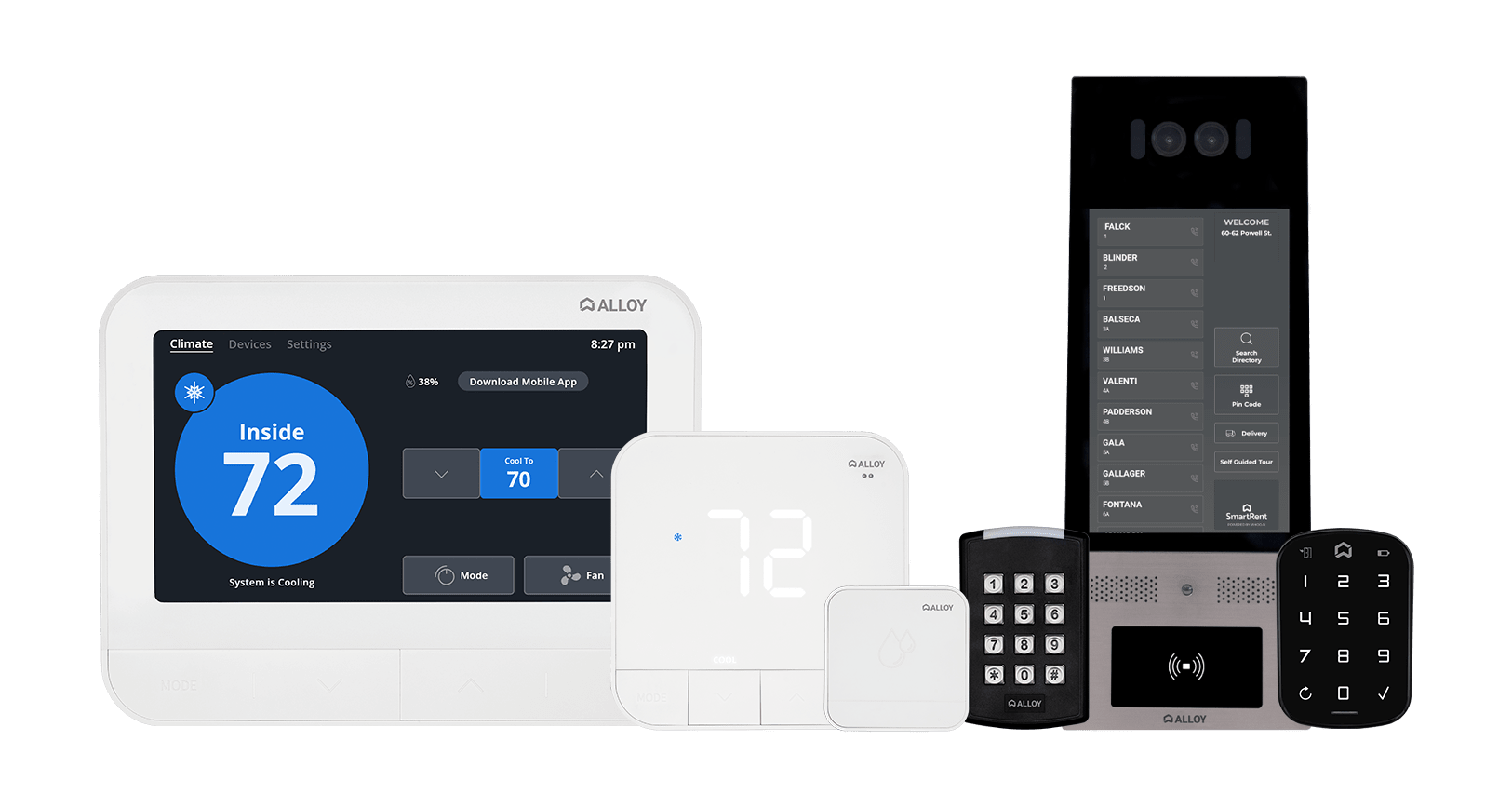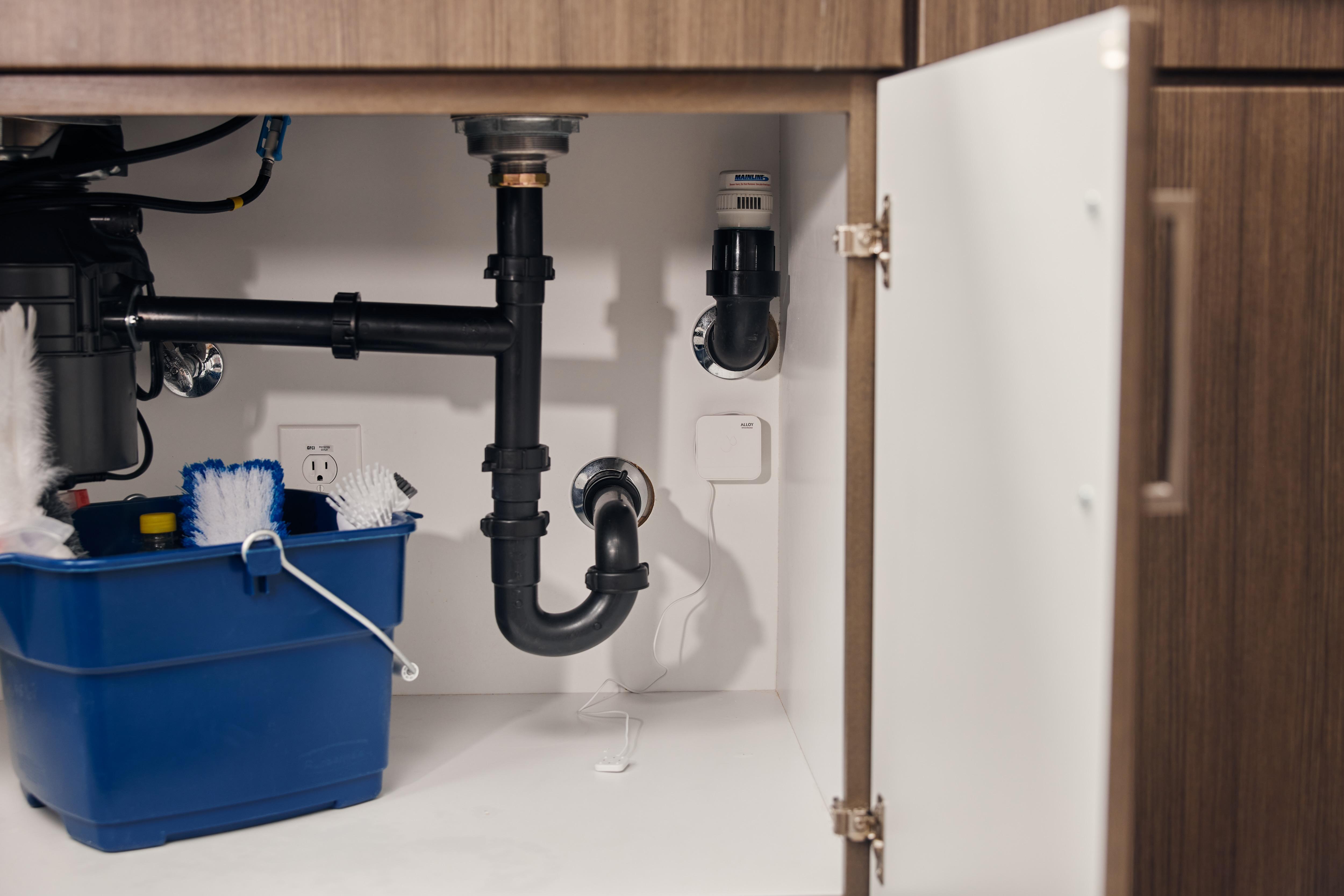Protect your assets with smart sensors that alert you to trouble

What types of sensors are available in smart home technology?
Smart sensors alert you to situations that require immediate action, like leaks, open doors and windows, and unexpected movement within a vacant unit.
Leak sensors
Prevent major water issues
Undetected leaks are every property manager’s fear, but leak sensors let you know right away when something’s wrong—even when it’s a small leak that could cause unreported mold issues over time. Pair leak sensors with the SmartRent platform, and you’ll even get an auto-generated work order so your techs can take immediate action. Prevent expensive damage, reduce operational costs, and keep residents healthy and happy—all by detecting leaks early.
Contact sensors
Monitor doors and windows
Contact sensors alert you when a door or window opens in one of your apartments. Protect units by knowing when someone’s accessing them unexpectedly. Minimize energy bills by staying aware of doors and windows that are left open. And keep an eye on self-guided tours by knowing when prospects enter and leave a unit.
Motion sensors
Detect unexpected movement
Protect model and vacant units by choosing key team members to receive alerts when motion sensors are triggered unexpectedly. Easily move sensors to newly vacant units, or install them permanently in common areas to gain insights about which areas have the most activity and when.
Frequently Asked Questions
A smart sensor might sense movement, moisture, temperature, or proximity, then send an alert to inform residents, staff, or both. Smart sensors are how the SmartRent platform understands the physical world inside your communities.
Smart contact sensors work by using two magnets that are installed next to each other: one on a door or window and the other on the wall. When the door or window opens, the two parts of the magnet break contact with each other and the sensor sends out an alert.
When a leak sensor detects water, it alerts residents and site teams. The resident has the chance to mark the alert as a false alarm. If they don’t, then the SmartRent platform generates a work order so your technicians know to check out the leak immediately.
Smart motion sensors are placed in vacant or model units to help your staff keep an eye on things. When the sensor detects movement in the unit, it alerts your site team so they can send someone to check it out.
Smart parking sensors are placed in each parking space and given a unique identifier. When a car pulls into the space, the sensor “sees” it and notes that the space is occupied. Then the smart parking system can tally available spaces and use digital signage to direct drivers to any available spaces.
This device is a sleek and smart solution designed to tackle water leaks head-on. It blends advanced technology with ease of use to keep your properties safe and dry.
Alloy SmartHome
Hardware designed for smart communities
Our in-house smart home equipment does it all. Build the perfect smart apartments with Alloy hubs, thermostats, and sensors. Fully integrate them with the proptech you already use, and control everything with a single app.

Solutions powered by Alloy

Access Control
Access control panels, readers and intercoms optimize all facets of guest and visitor entry, from common areas to apartment homes.
Read More
Smart Apartments
Smart locks, hubs, thermostats and leak sensors make it easy for owners to manage their communities while decreasing costs.
Read MoreParking Management
Smart sensors paired with our software database help manage space alignment, streamline enforcement, and monetize guest or premium spaces.
Read More
Self-Guided Tours
Strategically placed smart devices give prospects the freedom to tour a property when it’s convenient for them, effectively expanding leasing hours.
Read MoreIntegrations
More compatibility, more integrations
SmartRent has more seamless integrations than any other multifamily technology brand. That means more convenience and features, whether you’re building smart communities from the ground up or retrofitting older technology.














See more compatible hardware
Trusted by the biggest brands in multifamily














